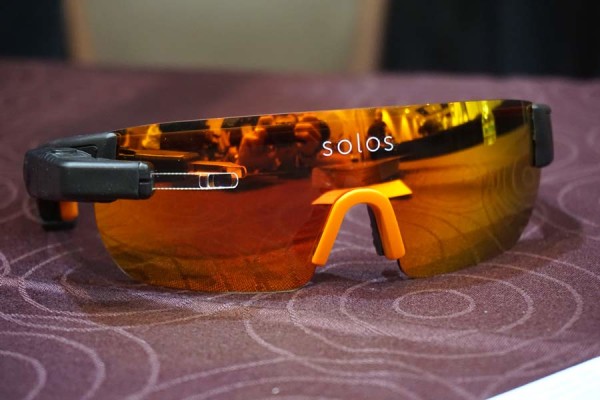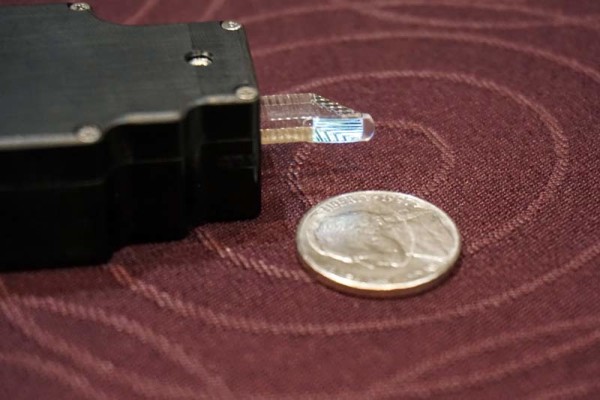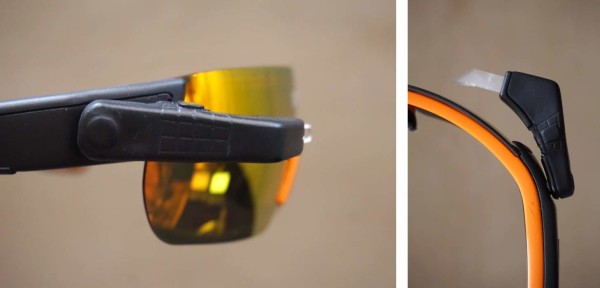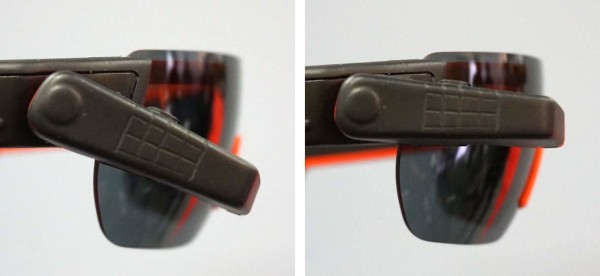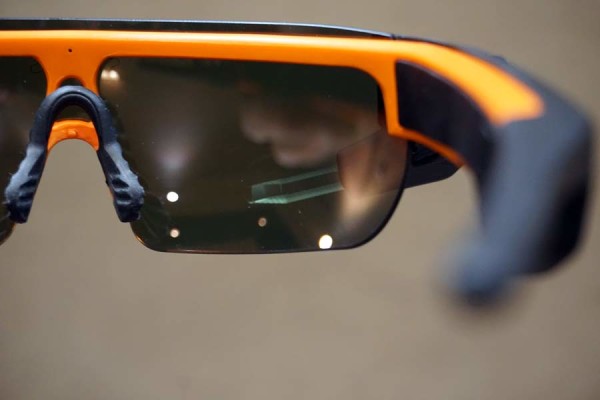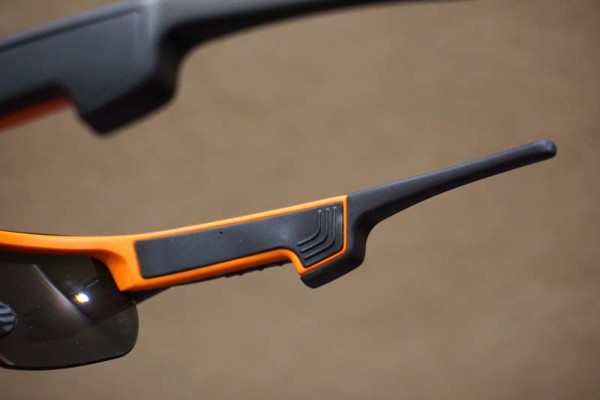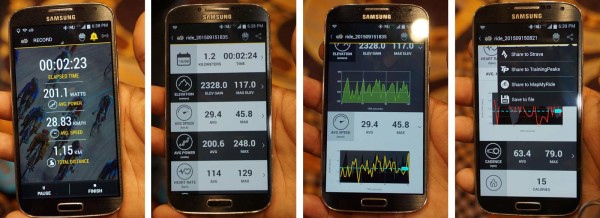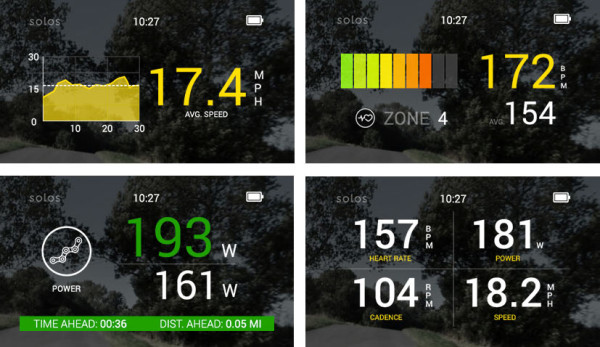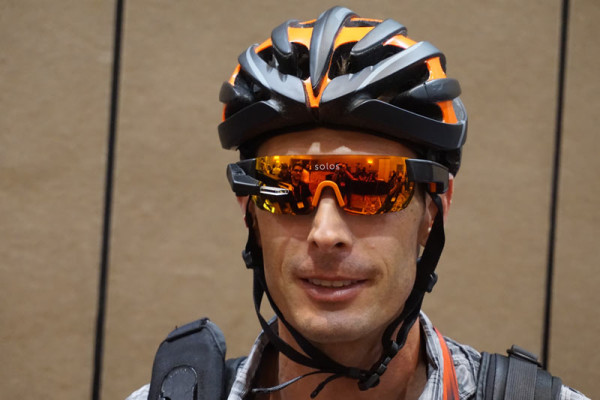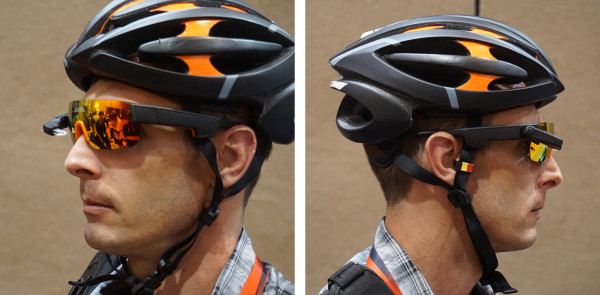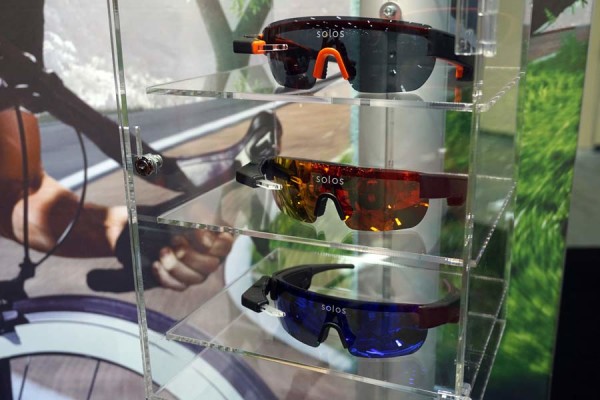Kopin, a brand calling themselves the world’s leading supplier of wearables and micro displays, has primarily focused on high end and military applications for many years.
More recently, as the cost of those displays has come down, they’ve found ways to commercialize those displays with some of the 3D virtual reality headsets making their way to market. For athletes, that also includes products like the Recon Jet, for which which they made the screen.
As these consumer products started taking off, they asked themselves “What are the changes in user behavior around devices?”
The answer would help them adapt the devices to modern users. That meant smaller sizes and better battery life. And for most folks, it meant their smartphone was tagging along for the ride. So, they could focus not on recreating a miniature computer, but on their their specialty: Micro displays.
The result is Vista, which is about one quarter the size of anything else out there. And they’re putting it on their new Solos sunglasses…
One of the folks behind the Solos is Dr. Ernesto Martinez, who has worked on exoskeletons and bionic parts at MIT Media Labs. He joined the team to develop a very sports focused, bio-inspired eyewear. The Solos differentiates itself from the Recon Jet in several ways, the first of which is the screen size – it’s tiny.
Where the Recon Jet’s screen is housed in a fixed position at the bottom, Solos’ housing pivots on a ball joint that allows you set it high or low, inboard or outboard, such that it’s in the least obtrusive yet most useful spot. The clear part of the arm lets you see through it rather than blocking a portion of your surroundings.
The articulating pod’s range covers about half of the lens from top to bottom, but the visual effect when wearing them is more dramatic. Lateral adjustments are mainly going to be made to get the screen angled so you can see it.
Above the nose bridge is a microphone with noise cancelling tech that ignores road noise and allows you to make voice commands. It also measures ambient noise to adjust volume for the speakers:
Stereo speakers are in front of the ear, not in it, but they project directly toward the ear. That allows for training cues and feedback to come audibly instead of visibly if that’s your preference. It also means you’re still able to hear ambient noise – traffic, pedestrians, riding buddies, etc.
Another key difference between this and the Jet is that the Solos’ HUD and it’s accoutrements are “dumb”. The Solos smartphone app is the brains of the operation. It handles the processing and lets you customize what’s shown on the HUD and what’s transmitted audibly. The benefit to this method is that the glasses themselves aren’t tasked with computing a lot of data, so they can be lighter and the battery can last longer. Up to six hours per charge, to be exact, thanks to an ultra-dense Simax lithium silicon battery.
The glasses pull all data from your smartphone via Bluetooth, so it will display or announce heart rate, cadence, power, speed, etc., using your phone’s GPS for speed and location. All other metrics will come only from devices that can connect to your phone. That means ANT+ sensors are supported only to the extent that your phone has ANT+. Fortunately, there are a growing number of Bluetooth speed/cadence/power sensors from Wahoo, Stages, Polar/Keo and others on the market already.
After the ride, data can be synced to Strava and Training Peaks. But, audio cues can come in real time directly from apps like Google Maps (navigation!), Strava, MapMyRun, etc. Eventually, they’ll be able to take data from those 3rd party apps and present the stats visually, too.
Whether the styling catches your eye or not, I did think they looked better on than just sitting on the table. The lenses are made of impact resistant polycarbonate and will likely come in gray, mirrored and either clear or yellow when they first start shipping. Lenses will be interchangeable.
It’s worth mentioning that the design here is still prototype and may change. They were soliciting feedback at Interbike to determine likes and dislikes, usability suggestions, and more. Got ideas? Leave ’em in the comments, they’re reading them.
Long term, they’re working to miniaturize the hardware even more, possibly making it so you could add it to any sunglasses. The trick is getting the weight balance and ergonomics right, as well as maintaining the right focal point. But they themselves 100% want to be able to do that, so our money’s on seeing it before too long. They’ve also had some discussions with large eyewear companies, so perhaps we’ll see it pop up on popular models. In the meantime, they looked at the popular models from Smith and Oakley to design something that mimicked what most of us are already riding.
It may be a few months before it ships, but they say price will be less than $500. Why get one? Mo’ metrics means mo’ problems if you’re trying to focus on the road ahead while also tracking power, heart rate, speed, etc. Putting that data stream in your peripheral vision lets you stay on top of it without looking down at a computer.
